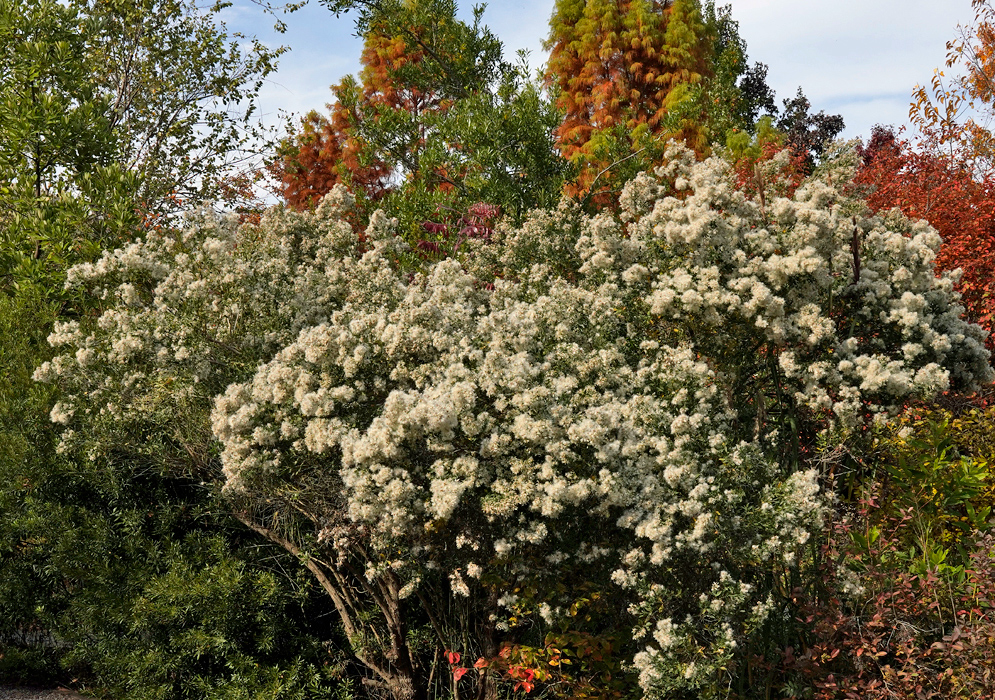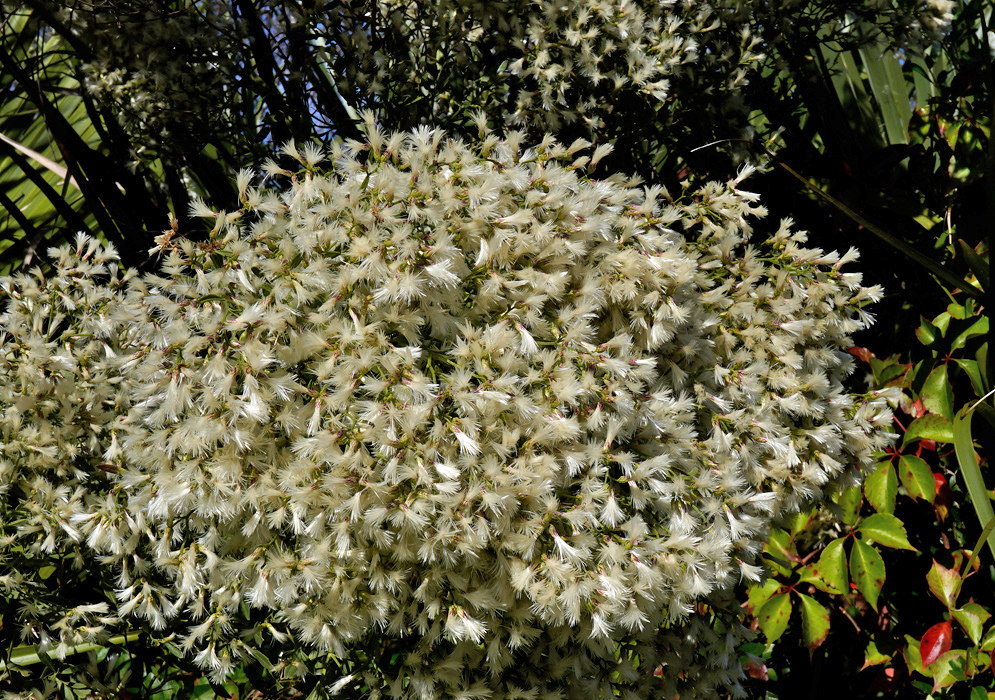This post has 11 Simple Fields-fields attached. Show fields.

Native to the Atlantic and Gulf coasts of the United States from the Mid-Atlantic south to Florida and west to Texas, this thicket-forming shrub occupies brackish marsh edges, back-dune swales, coastal hammocks, and disturbed road verges, and it often persists inland on alkaline or saline soils; it also occurs outside its natural range as a widely naturalized species in western Europe and eastern Australia where it can spread aggressively. Typically a semi-evergreen, many-stemmed shrub reaching about 6–12 ft tall, it withstands salt spray and periodic flooding and is used as a windbreak and bank stabilizer in seaside landscapes. Plants are dioecious; late summer through fall, the male plants produce small, inconspicuous heads, while the female plants mature into conspicuous white masses of silky pappus that cap each cypsela and give the shrubs a snow-covered look just as many coastal plants finish blooming. The plume-tufted fruits are wind-dispersed and travel readily, allowing colonization of open substrates; individual shrubs have been documented producing large seed crops that germinate in bare, moist soils after storm events. Photographed in Virginia.



